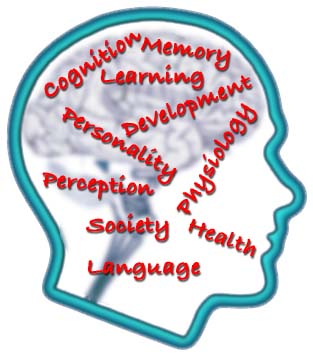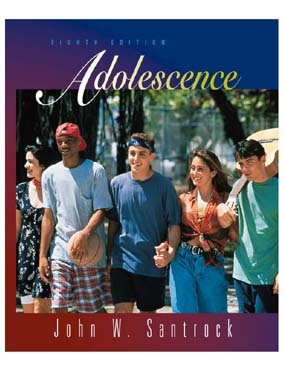Go To
Adolescent Psychology
| Instructor: Eric Amsel | E-mail: eamsel@weber.edu | Office: 354 SS |
| Office Hours: WF 9-10 | IM Screen Name: EricAmsl | Phone: 626-6658 |
Course Objectives
: The course will examine theories of and research methods in adolescent psychology from a developmental framework. The objectives are:- To examine research and theory regarding the nature of and interrelation between adolescents’ physical, cognitive, social, and personality development and how these relations vary by context (home, school, peers, culture).
- To grapple with the question of whether or to what extent adolescence is a unique stage of life involving unique genetic, biological, cognitive, environmental, and cultural factors or forces.
- To apply knowledge about adolescent psychology to the evaluation and the assessment of
adolescents.
- To appreciate the research strategies used by psychologists to test and support their claims about adolescence.
Required Textbook: Santrock, J.W. (2005). Adolescence (10th Ed.). Madison, WI: Brown & Benchmark Publishers
Grading: There will be three EXAMS which will be held at four to five week intervals. Exams will be based on the material from the lectures, assigned readings, the textbook, and class discussion. The exams will include multiple choice, definition, and essay questions. The essay questions will be given out before each exam for you to prepare. In addition, you will be required to complete three short PAPERS, which entail answering prescribed questions or following a prescribed format. The first paper is a review and a critique of a published research article; the second paper is an observation of an adolescent peer groups; the third paper is an "Adolescence Study" in which you apply theory and research to assess an adolescent. Every week or so you will be expected to complete a practice QUIZ that will be available through chitester. To pass a quiz you will need to score 85%, but you can retake the quiz as many times as you wish and can use your books and notes. An ON-LINE DISCUSSION will be available through the WebCT portal. Finally, students’ ATTENDANCE AND PARTICIPATION will be assessed in part by participating in discussions.
Distribution of Grades:
Exams(3).............................50%
Exam
1...............15%
Exam 2...............15%
Final................20%
Assignments(3).......................35%
Evaluation...........10%
Observation..........10%
Assessment...........15%
Quizzes...............................5%
Participation/Attendance..............5%
On-Line Discussions...................5%
Course Structure:
The central theme of the course is to consider the
way(s) in which adolescents live in
a different world from the world of children and adults. Put differently, the course
addresses whether adolescence is an unique stage of life
such that adolescents should be treated differently than both children and adults.
In order to arm ourselves for the
discussion, we will initially consider theoretical and methodological issues in the study
of adolescence. Theoretical approaches (including Cognitive-developmental, Behavioral,
Ethological/Biological, Psychoanalytic, and Ecological) will be outlined for what they say
about the issue of the continuity between children, adolescents, and adults. We will
examine methodological issues with an eye to learning how to be critical about claims made
about adolescent behavior. We will spend the subsequent two weeks addressing important biological
and cognitive changes in adolescence in order to determine whether
these factors alone is the reason for the uniqueness of adolescence as a stage of life. Then, we will consider whether the
uniqueness of adolescence has more to do with the social contexts they create or
are created for them (including family, peers, schools, and culture). Finally, based on
the previous discussions, a Bio-Psycho-Social model will be developed and applied to the
adolescent social and personality development (including sexual, gender, values, identity,
and problems) in order to fully appreciate the uniqueness of adolescence.
Class Policies: For a review of class policies, click here. (For Late Contract, click here)
Like its politicians and its wars, society has the
teenagers it deserves.
-- J. B. Priestley





![Horns_flags[1].gif (13748 bytes)](../../../images/Horns_flags[1].gif)


